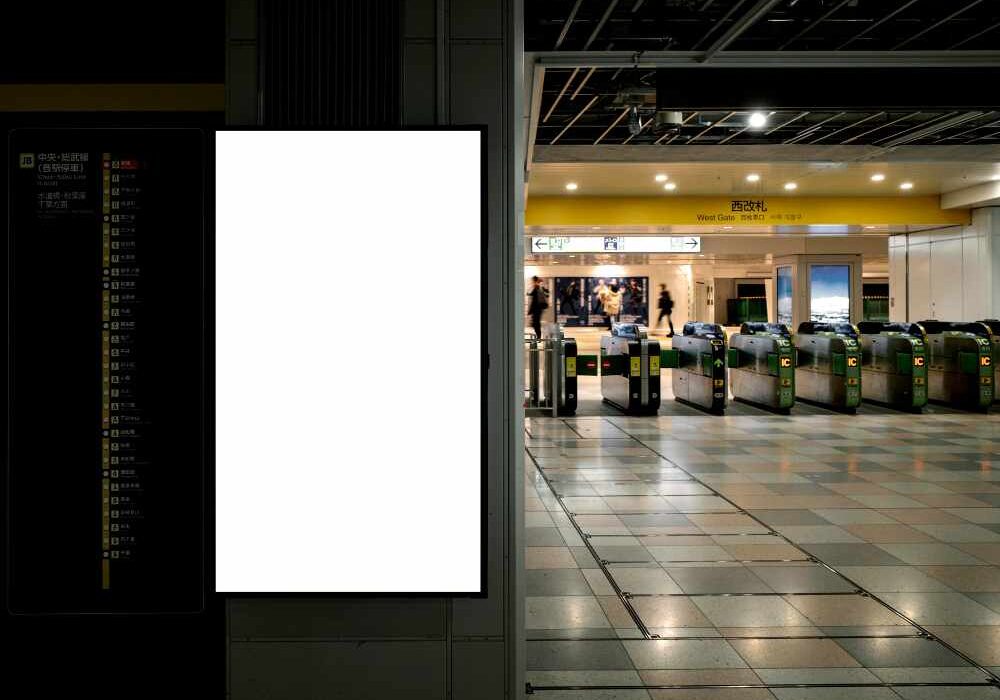Why Indoor LED Displays different than Outdoor LED Displays

Understanding the Key Differences Between Indoor and Outdoor LED Displays
Introduction
LED displays have become an integral part of modern advertising, communication, and entertainment. Whether you’re walking through a bustling city street or attending a high-profile conference, chances are you’ve encountered these vibrant, attention-grabbing screens. But did you know that not all LED displays are created equal? The differences between indoor and outdoor LED displays are significant and go beyond just their physical location.
In this article, we’ll explore the key distinctions between indoor and outdoor LED displays, including their design, functionality, and applications. By understanding these differences, you’ll be better equipped to choose the right type of LED display for your specific needs.
1. Design and Construction
Indoor LED Displays
Indoor LED displays are designed with aesthetics and functionality in mind for controlled environments. These displays are often sleek, lightweight, and can be integrated seamlessly into the architecture of a building. The design focuses on delivering high-resolution images and videos, making them perfect for close-up viewing.
Outdoor LED Displays
Outdoor LED displays, on the other hand, are built to withstand harsh weather conditions. These displays are encased in robust, weatherproof enclosures that protect them from rain, dust, and extreme temperatures. The design of outdoor LED displays prioritizes durability and visibility, ensuring they remain functional and vibrant in various environmental conditions.
2. Brightness and Visibility
Indoor LED Displays
Indoor LED displays are designed to perform in environments with controlled lighting. They typically have lower brightness levels, as they do not need to compete with direct sunlight or other intense light sources. The brightness is optimized to be comfortable for viewers who are in close proximity to the screen.
Outdoor LED Displays
Outdoor LED displays require much higher brightness levels to remain visible in bright daylight. These displays are equipped with advanced technology that enhances brightness and contrast, ensuring clear visibility even in direct sunlight. High brightness is crucial for outdoor displays to catch the attention of passersby from a distance.
3. Pixel Pitch and Resolution
Indoor LED Displays
Pixel pitch refers to the distance between the pixels on an LED display. Indoor LED displays typically have a smaller pixel pitch, resulting in higher resolution and sharper images. This is important for indoor displays, as they are often viewed from shorter distances, where image clarity is critical.
Outdoor LED Displays
Outdoor LED displays generally have a larger pixel pitch, which is suitable for viewing from greater distances. While this results in a lower resolution compared to indoor displays, the larger viewing distance compensates for the difference, making the images and text appear clear and legible.
4. Durability and Weather Resistance
Indoor LED Displays
Since indoor LED displays are used in controlled environments, they do not require the same level of durability as their outdoor counterparts. However, they are still built to last, with components that can withstand continuous use without overheating or degrading in quality.
Outdoor LED Displays
Outdoor LED displays are designed to be highly durable and weather-resistant. They are often rated for water and dust resistance (IP65 or higher) and can operate in extreme temperatures. This rugged construction ensures that outdoor LED displays can function reliably in all kinds of weather, from scorching heat to freezing cold.
5. Energy Efficiency
Indoor LED Displays
Indoor LED displays are generally more energy-efficient due to their lower brightness requirements and smaller size. Energy efficiency is an important consideration for indoor displays, especially in settings like offices or retail stores where the screens may be running for extended periods.
Outdoor LED Displays
Outdoor LED displays consume more energy due to their higher brightness levels and larger sizes. However, advancements in LED technology have led to more energy-efficient outdoor displays, which help reduce operating costs while maintaining high performance.
6. Installation and Maintenance
Indoor LED Displays
Indoor LED displays are typically easier to install and maintain. They do not require the same level of weatherproofing and are often integrated into existing indoor infrastructure. Maintenance is usually straightforward, with easy access to components for repairs or upgrades.
Outdoor LED Displays
Installing outdoor LED displays is more complex due to the need for weatherproofing and ensuring structural stability in exposed locations. Maintenance is also more demanding, as outdoor displays are subjected to environmental wear and tear. Regular inspections and upkeep are essential to keep outdoor displays functioning optimally.
7. Applications
Indoor LED Displays
Indoor LED displays are commonly used in a variety of settings, including:
- Retail Stores: For advertising promotions and enhancing the shopping experience.
- Corporate Environments: For presentations, video conferencing, and branding.
- Entertainment Venues: For concerts, theaters, and exhibitions.
- Transportation Hubs: For displaying information and advertisements.
Outdoor LED Displays
Outdoor LED displays are used in more public and high-traffic areas, such as:
- Billboards: For advertising along highways and in urban centers.
- Sports Stadiums: For displaying scores, replays, and advertisements.
- Public Squares: For announcements, events, and public information.
- Transportation Terminals: For wayfinding, schedules, and ads.
Conclusion
Understanding the differences between indoor and outdoor LED displays is crucial for making the right choice for your specific needs. While both types of displays offer unique advantages, their design, functionality, and applications vary significantly. Indoor LED displays excel in providing high-resolution, close-up visuals in controlled environments, while outdoor LED displays are built for durability and visibility in challenging outdoor conditions.
By considering factors such as brightness, pixel pitch, durability, and energy efficiency, you can select the LED display that best fits your requirements, ensuring optimal performance and a strong visual impact.
FAQs
- What is the main difference between indoor and outdoor LED displays?
The main difference lies in their design and functionality. Indoor LED displays are optimized for high-resolution, close-up viewing in controlled environments, while outdoor LED displays are built for durability and visibility in outdoor settings with varying weather conditions. - Can outdoor LED displays be used indoors?
While technically possible, using outdoor LED displays indoors is not recommended due to their higher brightness levels and larger pixel pitch, which may result in an overly bright and less sharp display in an indoor environment. - What factors should I consider when choosing between an indoor and outdoor LED display?
Consider factors such as the intended environment, viewing distance, brightness requirements, durability, and specific application needs. Indoor displays are ideal for controlled settings, while outdoor displays are suited for harsh environments. - How do outdoor LED displays handle extreme weather conditions?
Outdoor LED displays are designed with weather-resistant enclosures and components that can withstand extreme temperatures, rain, dust, and other environmental challenges. They are often rated with IP65 or higher for water and dust resistance. - Are indoor LED displays more energy-efficient than outdoor ones?
Yes, indoor LED displays are generally more energy-efficient due to their lower brightness levels and smaller sizes. However, advancements in technology have made outdoor displays more energy-efficient as well, despite their higher power requirements.










